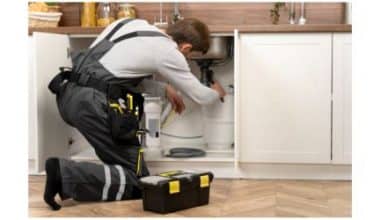The cost of snow removal insurance varies based on your needs and circumstances, but it can start at as little as $50 per month. Your specific quotation will depend on a number of criteria, including the type of job you do, where you work, and how many staff you have.
In this article, we look at what coverage is best for you, ensure that your policy covers your claims, and ensure that any claims you may make are handled as soon as possible.
What is Snow Removal insurance?
Snow removal business insurance can assist with paying for the expenses of auto accidents, equipment theft, and unintentional damage to parked automobiles and fences. It also assists you in meeting state and contract standards. Essential protection against actions that could expose a snow removal company to liability is offered by snow removal insurance.
Furthermore, snow removal insurance packages shield you from potential lawsuits, whether an accident results in injuries to employees or other parties, damage to a client’s property, or damage to your own car. Any removal business must have a sufficient insurance policy that meets all of its needs for snow removal.
Snow Removal Insurance Coverage
These insurance plans include coverage for the most typical snow removal risks.
#1. General liability insurance
Legal fees resulting from the damage your snow removal causes are partially covered by general liability insurance. Combine it with business owner’s policy (BOP) insurance to save money on commercial property coverage.
It is ideal for:
- Fall and slip incidents
- Damaged goods for customers
- Defamation as well as further personal harm
#2. Business owner’s policy
A BOP offers a discounted combination of business property insurance and general liability coverage. For snow and ice removal contractors, this is frequently the most economical kind of insurance.
It is ideal for:
- Client-injured accidents
- Damage to client’s property
- Damaged or pilfered commercial property
#3. Workers’ compensation insurance
The majority of states mandate workers’ compensation insurance for companies that employ snow removal operators. Solitary owners are likewise shielded from work-related injury expenses that health insurance may not cover.
It is ideal for
- employee health costs
- disability income
- lawsuits for worker injuries
#4. Commercial Snow Removal Auto Insurance
Property damage and personal injury costs resulting from snow removal are covered by a commercial auto insurance policy. The requirements for auto coverage vary by state.
It is ideal for
- The physical harm snow removal causes
- medical expenses following a car accident
- Vandalism and theft of vehicles
#5. Contractor’s tools and equipment insurance
Repairs and replacements of ice scrapers, salt spreaders, snow blowers, and other equipment are partially covered by this policy. This kind of insurance is for inland maritime use.
It is ideal for:
- Equipment that is no older than five years
- Mobile apparatus
- little tools
#6. Professional liability insurance
When a snow removal firm is sued for an error or oversight, professional liability insurance pays for the associated legal expenses. Another name for it is errors and omissions (E&O) insurance.
It is ideal for:
- Charges of carelessness
- Not completing a project in a timely manner
- Non-fulfilled services
What can professional liability insurance cover for snow removal businesses?
#1. Failure to deliver promised services
In the construction business, delays are typical; nevertheless, if they negatively impact your client’s revenue, you may be sued. Professional liability coverage might cover your legal costs, including hiring a lawyer if a customer sues a general contractor, plumber, building design specialist, or other construction professional for missing a deadline or not delivering on promised results.
#2. Negligence in providing services
Regardless of whether you are at fault or not, if a consumer accuses your company of negligence, you may be facing an expensive lawsuit. When a client raises concerns about the caliber of their electrical, welding, or carpentry work, contractors’ E&O insurance can assist with court expenses, attorney fees, and verdicts or settlements.
#3. Errors and oversights
Should a client assert that an error on your part resulted in financial harm, you may find yourself in a court struggle that could end in bankruptcy or worse. An electrician would be held liable, for instance, if he neglected to fix the damaged wire and had to pay for a new installation. Legal costs associated with workplace errors are covered by your professional liability insurance coverage, including judgments in the event that a judge rules against you.
What Does Snow Removing Insurance Not Cover?
Even though most snow removal insurance policies protect you against a variety of dangers, some risks can call for supplementary insurance. They may consist of:
- Equipment malfunction, damage, or theft of your own
- Reimbursement to customers for subpar work
- Property loss or damage occurring off-site or during transportation
Examine your policy to make sure you understand what is covered, and if there are any gaps, add more insurance to make a package that offers complete protection.
Benefits of Snow Removal Insurance
Snow removal insurance offers various benefits to cover risks, including:
#1. It pays for the legal fees:
Legal fees and damages will be covered by snow removal insurance if a customer, worker, or other third party brings a case against you.
#2. It offers peace of mind:
You and your clients can rest easy knowing that your company is protected in the event that anything uncontrollable occurs. Furthermore, customers are more inclined to select snow removals with sufficient insurance.
#3. It protects your assets:
Causing harm or damage can be very expensive and can result in bankruptcy, regardless of whether you run a larger company or are a lone proprietor.
Snow Removal Insurance Cost
The cost of snow removal insurance can range from $400 to $2,000 a year, based on your coverage, location, the areas you shovel, payroll, sales, expertise, staff size, and equipment.
Cheap Snow Removal Insurance
#1. Next
NEXT Insurance serves as a one-stop shop to assist you in obtaining the reasonably priced snow removaling insurance required to safeguard your company against mishaps, injuries, court costs, and damaged cars. The typical contents of our insurance packages are:
- General liability
- Contractors’ E&O
- Commercial auto
- Workers’ compensation
- Tools and equipment
- Commercial property
#2. Insureon
Snow removal firms can apply for quotations on Insureon and receive coverage the same day. If you have the details of your business on hand, getting snow removal insurance and other types of coverage is simple. Basic information regarding your business, including revenue and staff count, will be requested on their application. With Insureon, purchasing a policy online and obtaining an insurance certificate is simple and only takes three steps:
- Fill out a complimentary web application.
- Evaluate insurance rates and select plans.
- After paying for your coverage, obtain a certificate.
#3. Xinsurance
This specific insurance coverage can protect your company against insurance claims resulting from third-party property damage and physical injury that may happen while it is operating. Because of the nature of their work, snow removal companies are regarded as high-risk; thus, liability insurance is crucial for reducing the costs of legal defense, medical expenses, and potential judgments. Having snow removal insurance or snow removal insurance also shows that you are committed to being accountable and offering a safety net in case of unanticipated circumstances.
#4. Thimble
As the expert snow removal driver that you are, you understand the value of staying warm, bundled up, and protected against the elements. With Thimble Snow Removal Insurance, all snow removal contractors can feel confident enough to start chipping away at the work.
#5. Simply Business:
Your customers can only get outside and accomplish their tasks safely if you can clear a path through dense drifts and compacted snowbanks.
When it comes to insurance, they assist you in navigating the technical terms to identify the best coverage for your company. Additionally, they are inexpensive and quick.
Why should I have Snow Removal Insurance?
To help safeguard yourself in the event of an emergency, you require snow removal insurance. You will discover the quality of your insurance partner later in life when the unthinkable occurs. Having snow removal insurance can shield you from large financial losses and, in certain cases, mean the difference between continuing to operate your business or closing it. Liability insurance may be necessary in some locations.
What type of insurance do you need for snow removal?
The most popular type of insurance coverage for snow removal is this one. It covers incidents of physical harm, damage to property, and other mishaps for which your company is held accountable. Note that before you start working for them, some clients can ask that you obtain this coverage.
How do I organize my snow removal business?
#1. Reach out to existing customers.
There’s a good probability that you have a large pool of prospective clients for your snow removal services if you already operate a landscaping or lawn care company. The secret is figuring out when to start discussing snow removal with your clients.
#2. Make it easy for customers to request snow removal services.
Allow clients to submit job requests via your website, social media accounts, or client hub, an online self-service portal. You can personalize your request form to include all the details you require to generate a precise quotation, such as the type of driveway material, lot size, and services required.
#3. Send professional quotes and upsell your services.
To expedite your quote process and secure more business, create a snow removal estimate template beforehand.
What should be on your estimate template?
- Your company’s name, emblem, and details
- Name and phone number of your client
- A list of the services you’ll be offering
- Pricing for snow removal, taking into account discounts, labor, supplies, and sales tax
- The duration of the estimate’s validity
- Your contract or terms and conditions for snow removal
- Leave space for the customer’s autograph.
#4. Make a contract for snow removal.
Establishing expectations with your clients early on will help you steer clear of problems or disappointments later on. The following should be covered by the snow removal policy of your snow removal company:
- Service description
- Property description
- Agreed upon definition of a “snow event”
- Payment terms
- Timeline guarantees
You can use one of our free, editable snow removal contract templates, or you can write one yourself. Just remember that before issuing a contract to your consumers, you should speak with financial or legal counsel.
#5. Dispatch and route your team efficiently.
You don’t have time to manually route work and communicate schedules to your crews during a snowstorm. You must be prepared to dispatch and route your personnel effectively right away.
Creating effective snow removal routes might benefit your company.
- Increase your crew’s productivity by finishing tasks more quickly.
- Save money by having less money spent on car upkeep and fuel.
- Boost client happiness by providing more dependable service.
#6. Get clients updated.
Large snowstorms can cause the snow to accumulate quickly. You don’t have enough time to get in touch with each client individually and inform them when to expect your services. Use automated emails and texts to save time while informing clients about your snow removal service.
#7. Publish invoices automatically and be paid right away.
Having a snow removal company means working late into the morning. After a hard night outside, the last thing you want to do is spend hours creating invoices in front of the computer.
Then, offer convenient credit card processing to make it simpler for them to pay you for your services. Clients can pay invoices online with a debit or credit card by visiting their client site.
What kind of insurance do I need for a skid steer?
Insurance coverage for general liability is the most popular type for skid steers.
Does insurance cover snow collapse?
Yes, snow collapse is covered by homeowners insurance. Your home’s contents and roof damage will be covered if snow causes your roof to collapse.
What is inclement weather insurance?
Weather insurance refers to a type of monetary safeguard against losses or harm brought on by unfavorable, observable weather conditions. Typically, these circumstances consist of wind, snow, rain, thunderstorms, fog, and unfavorable temperatures.
Is slipping on ice-covered by insurance?
To cover the damage your car sustains after slipping on the ice, you must have had collision coverage. Whether you run into a mailbox, railing, car, or any other inanimate object, you need his coverage. Make sure to pay your deductible in full before receiving any reimbursement.
Furthermore, getting a tow is usually necessary when sliding on the ice. Your specific auto insurance policy may cover the expense of a tow or getting you out of the ditch, depending on how it is written. To confirm your coverage, get in touch with your auto insurance representative.
Is snow removal a lucrative business?
Professionals who do snow removal make an average of $17.05 per hour, or $35,460 a year. Some snow removers make $50,000 per removal truck during the winter, so you can make much more money if you control expenses and optimize revenues.
How do I budget for snow removal?
#1. Budget the Service
To find out what the service includes and how much it might cost, do some research and speak with some people. For a better idea, you might also think about speaking with a reputable landscaping and snow removal business. In this manner, you will be able to create a workable strategy and budget since you will know the specifics of the total cost.
#2. Ask for quotes
You can receive an estimate from a trustworthy service provider in addition to planning your budget for the project. Obtaining different quotes can help you make an informed decision by allowing you to compare the price with what they offer and making sure you are both in agreement. In order to make sure your property is usable during the winter, you may also inquire about their policies on snow removal following winter storms.
#3. Employ Just One Provider
Find a service provider in your neighborhood that provides snow removal and landscaping services. In this manner, you can contract with the same business all year to have your residential property’s landscaping maintained. Additionally, they will be able to plan the job at your convenience, comprehend your wants, become familiar with your property, and provide seasonal services.
What is Snowbird insurance?
Snowbird travel insurance offers seniors who are going outside of Canada for an extended period of time emergency health and medical coverage. You decide how much coverage you want, but most policies provide between $1 million and $5 million.
What is float coverage insurance?
Floater insurance is a kind of insurance policy that offers extra protection over standard insurance plans and covers easily transportable personal belongings. Often referred to as a “personal property floater,” it can insure anything from pricey audio equipment to jewelry and furs.
What does rider insurance cover?
Riders are most frequently connected to long-term life insurance contracts. Some of the most popular ones include child-term, long-term care, accidental death, waiver of premium, family income benefit, expedited death benefit, and return of premium riders. Note that there are extra fees for riders.
ERRORS AND OMISSIONS INSURANCE: What Does It Covers?
Best Cheap Car Insurance for College Students in 2023






